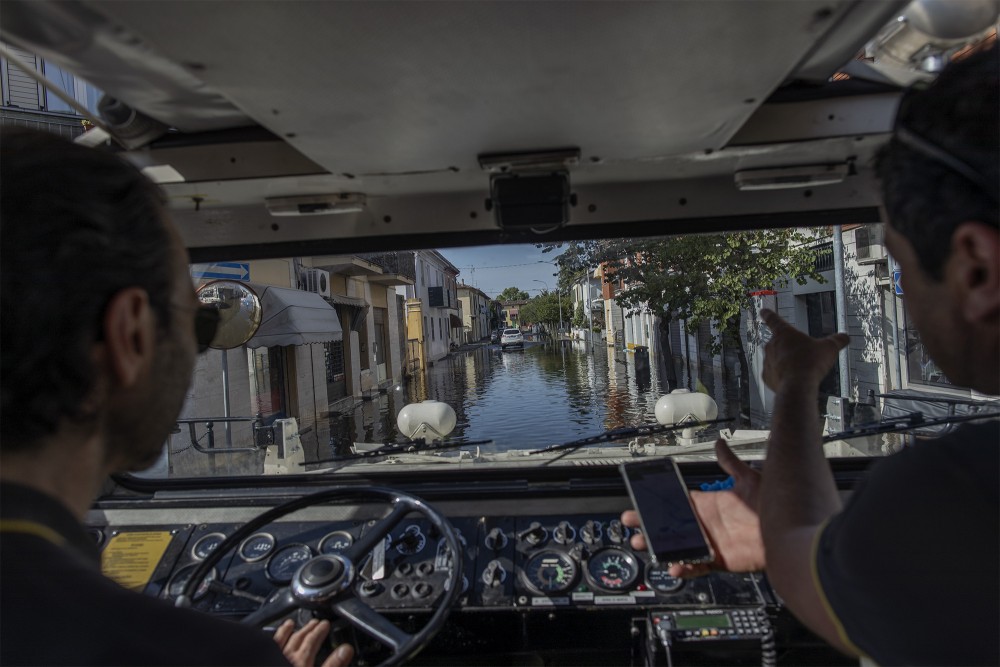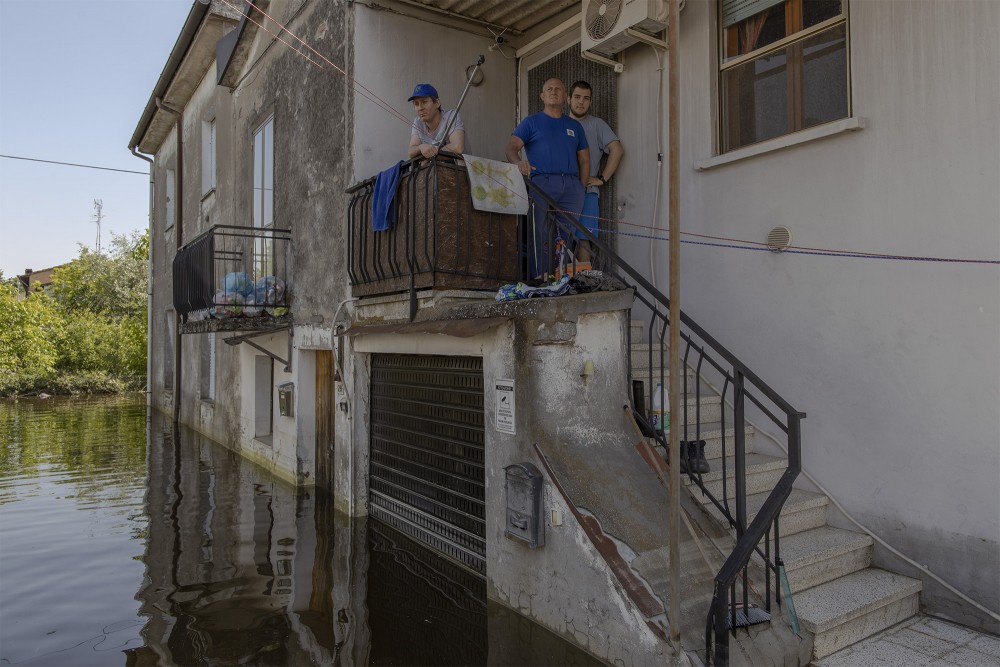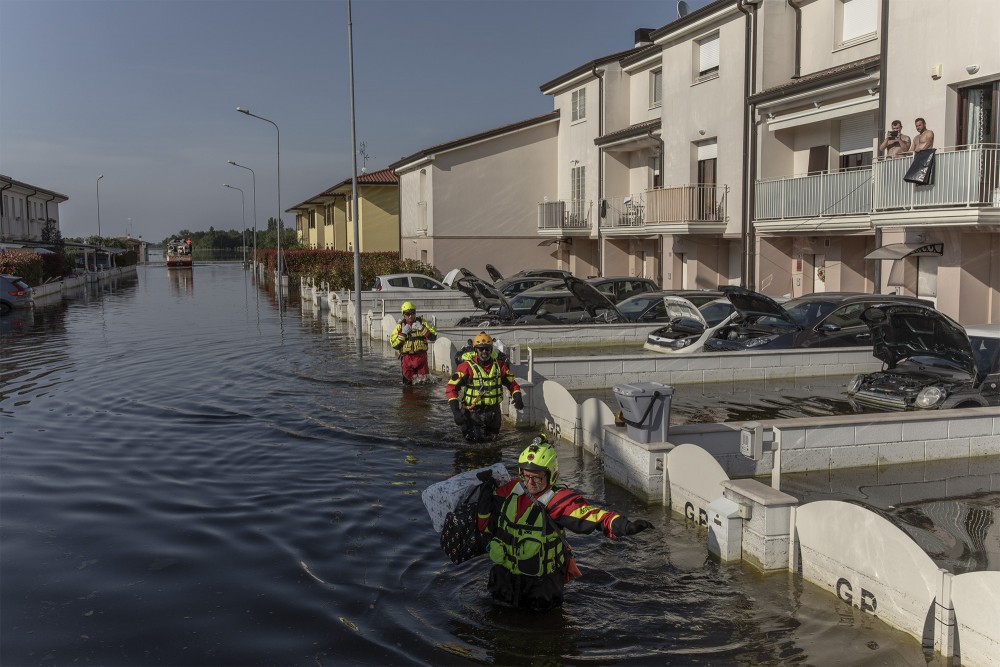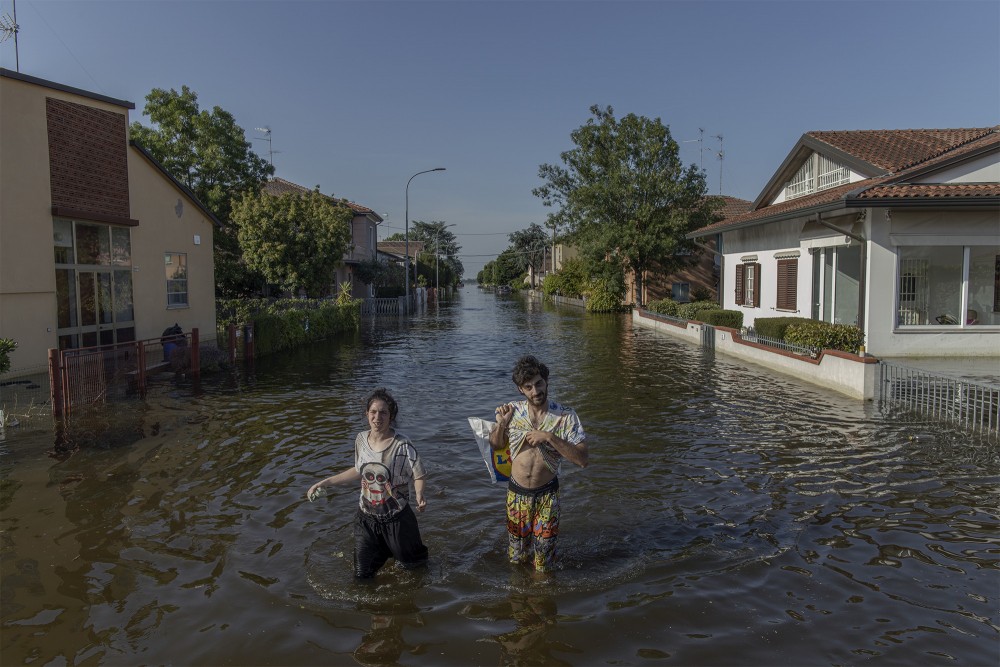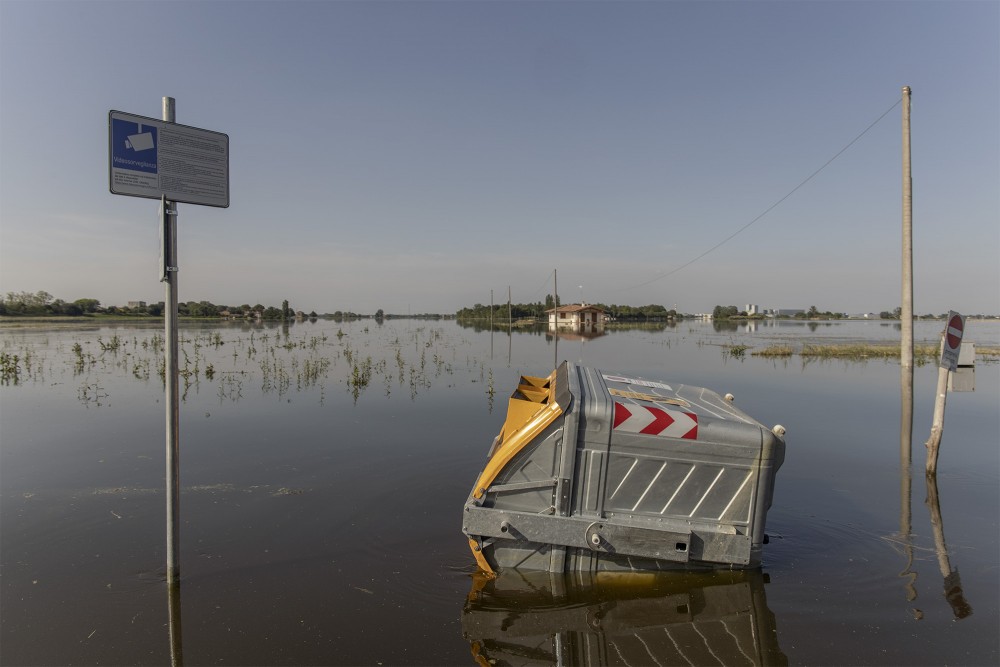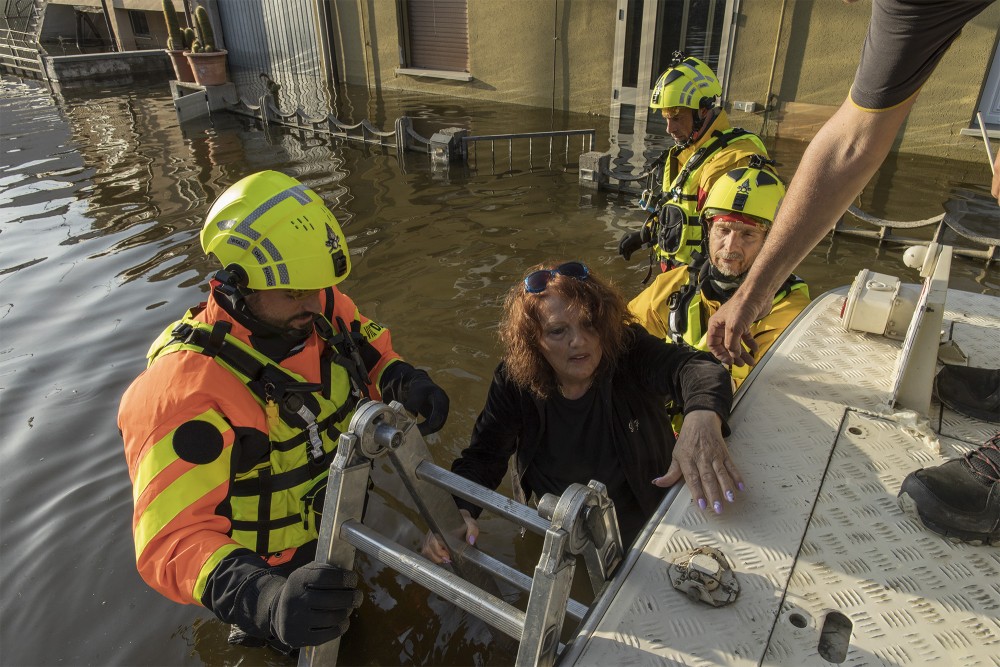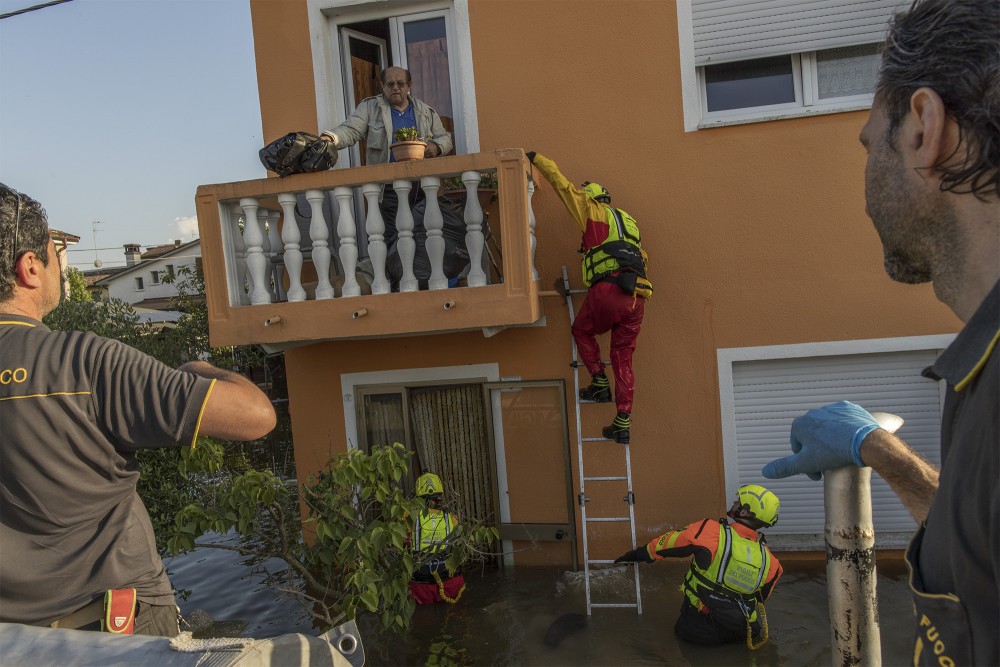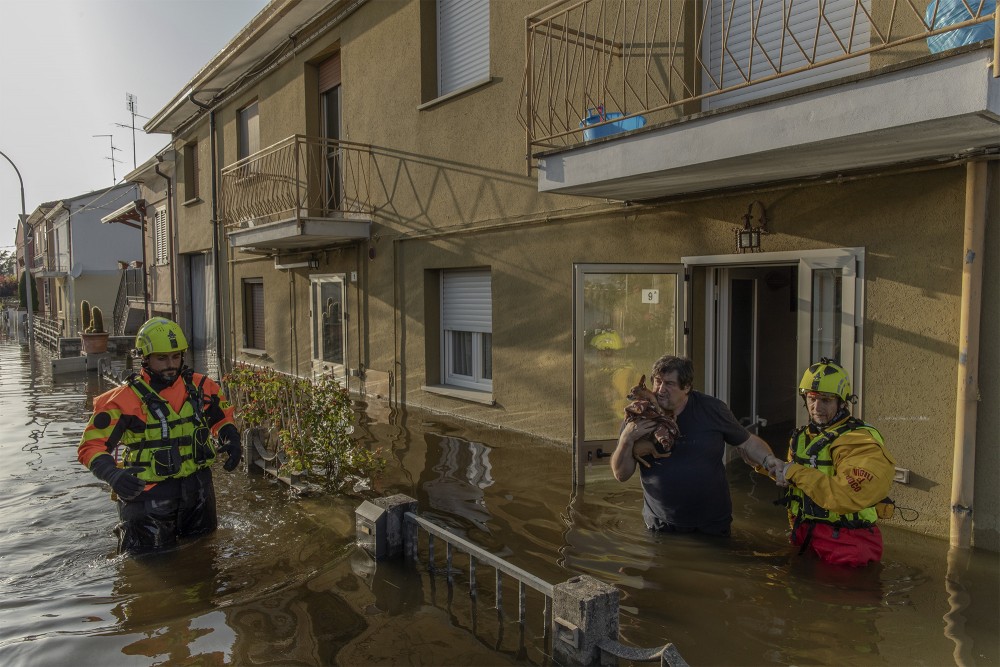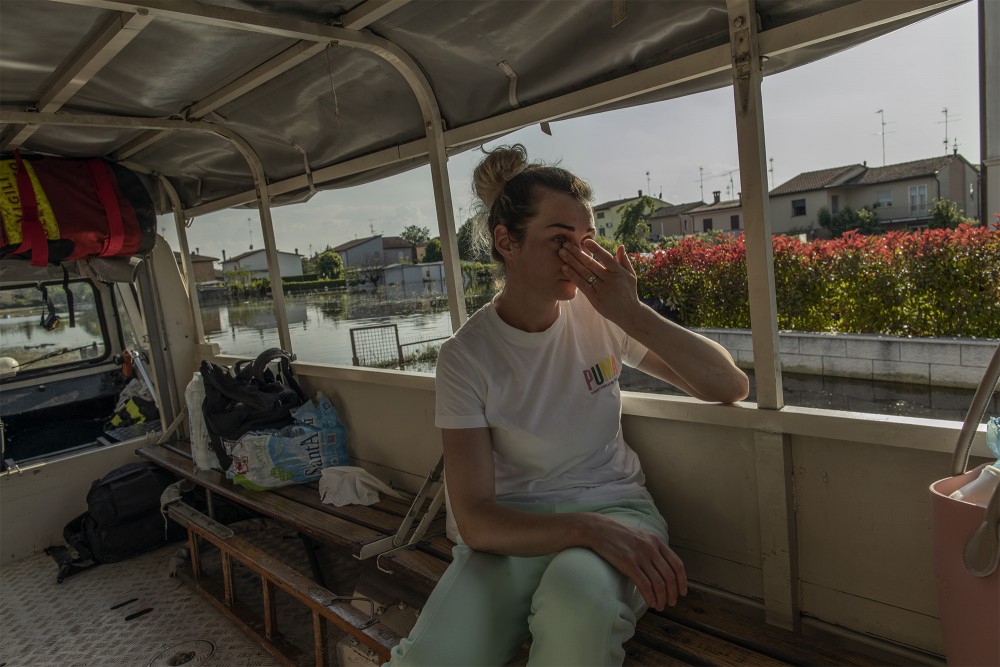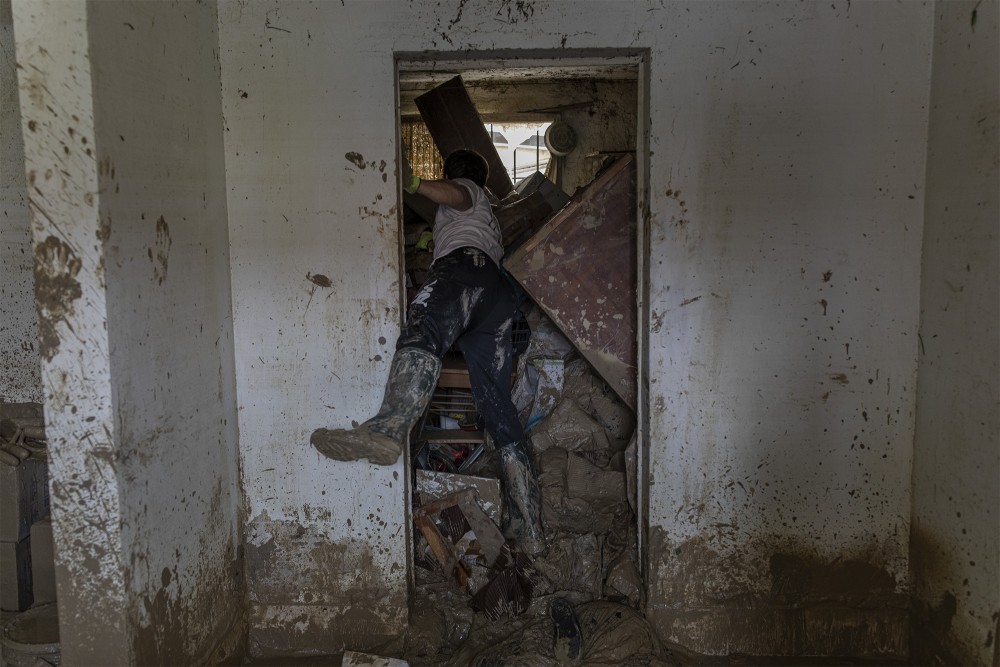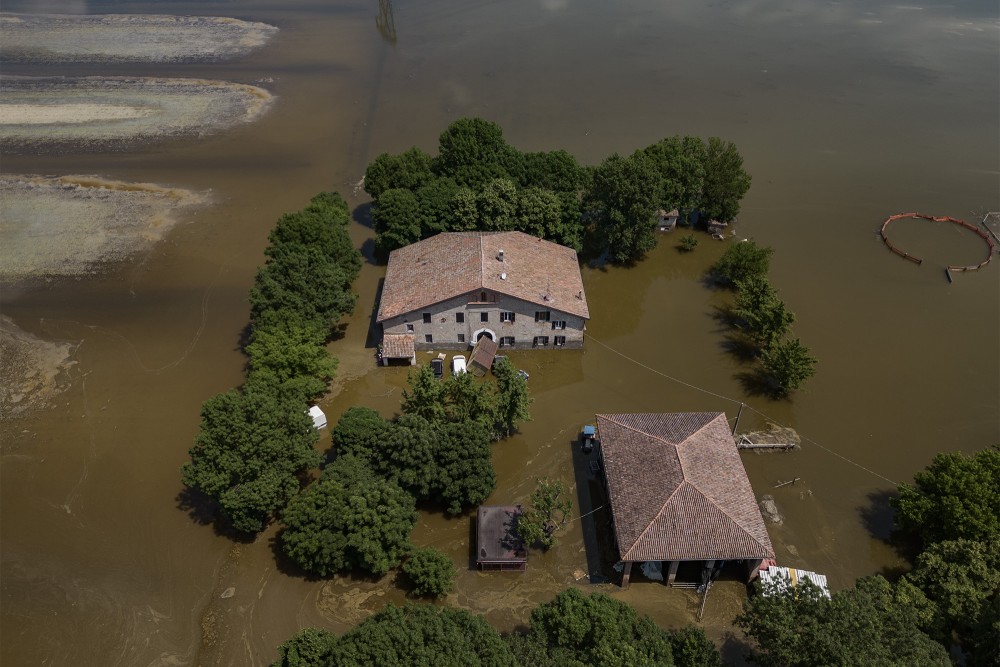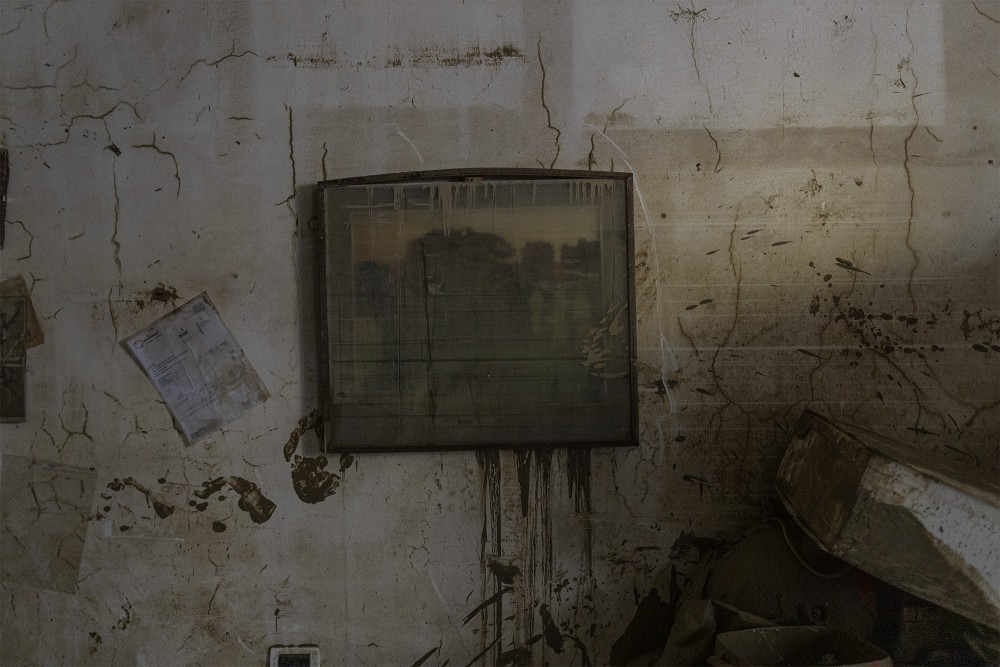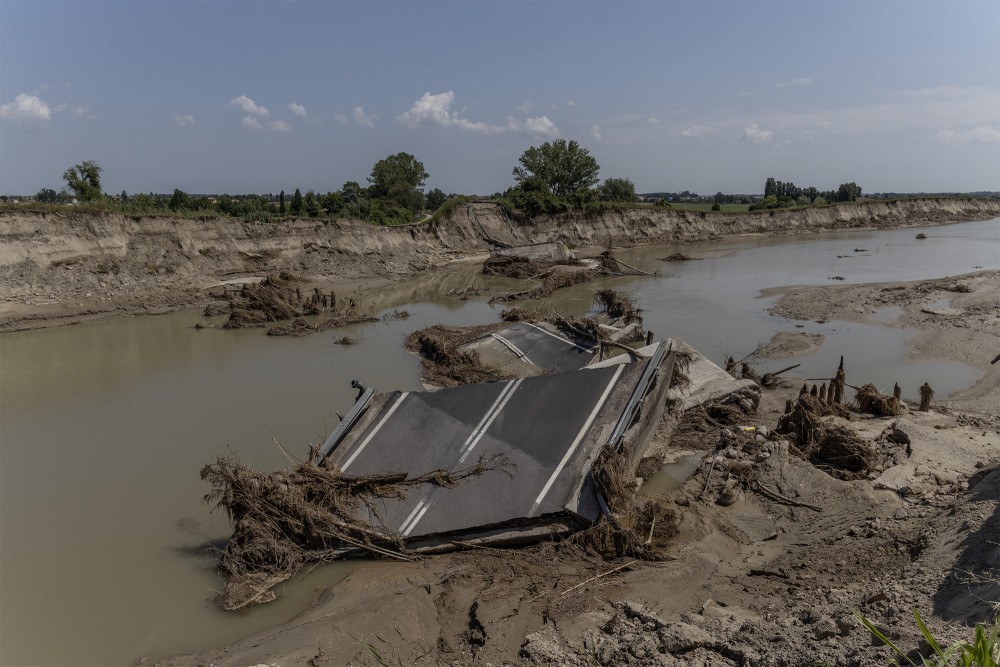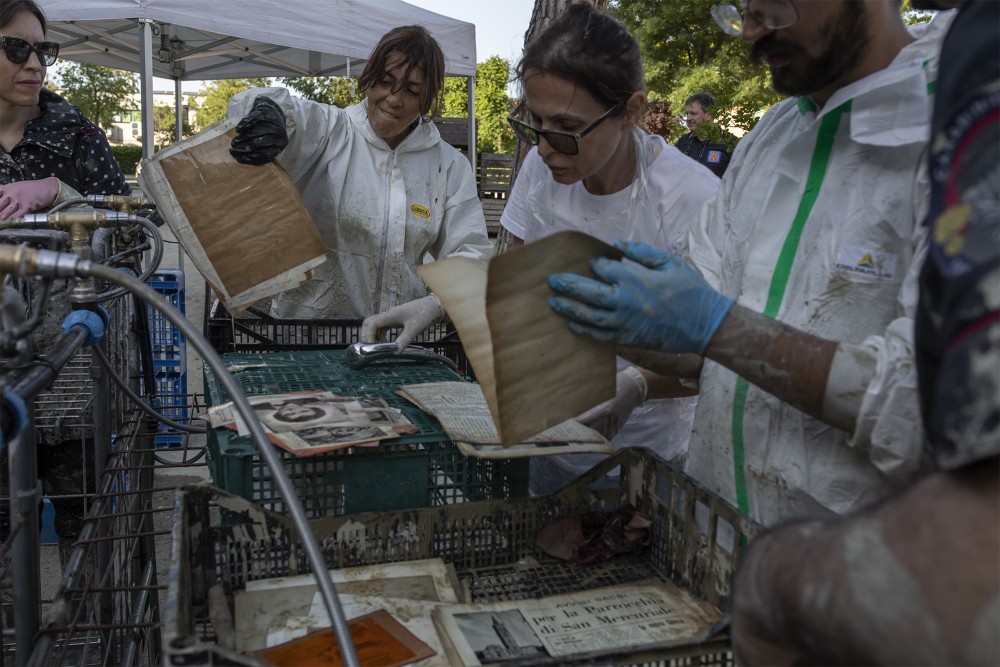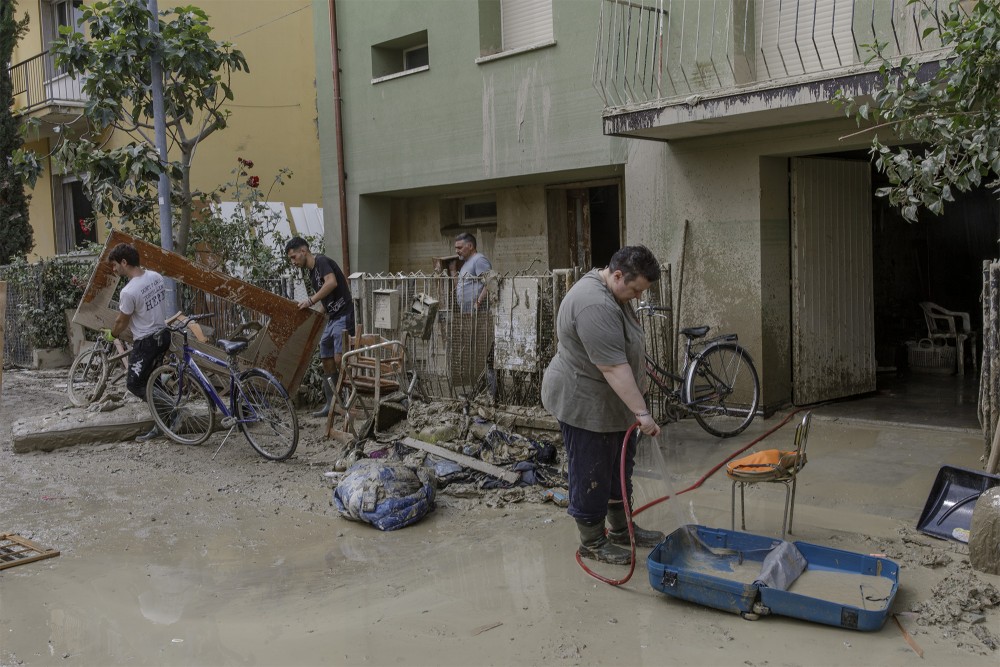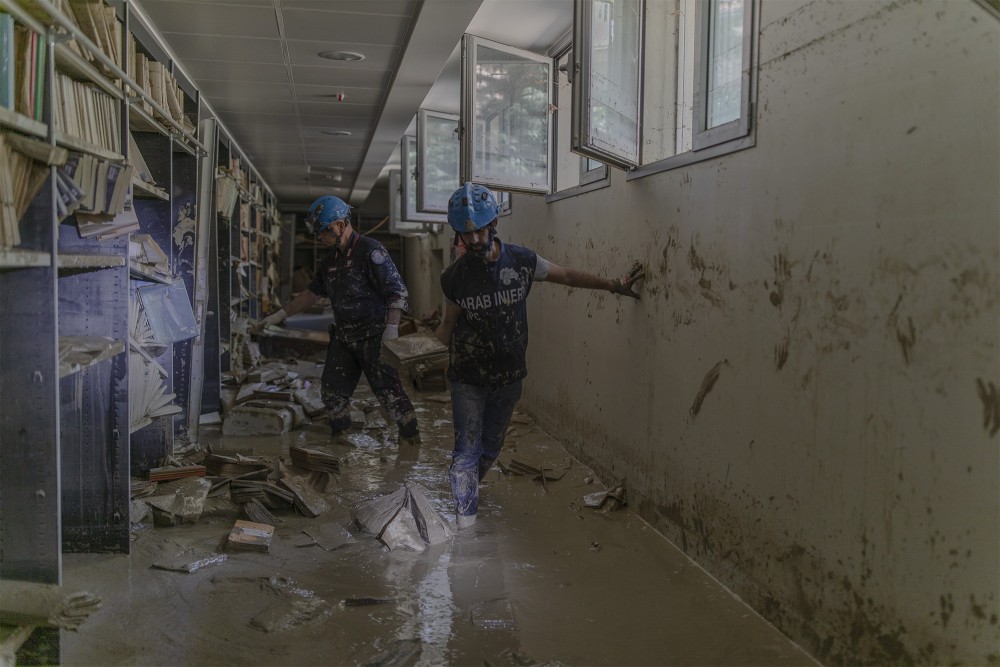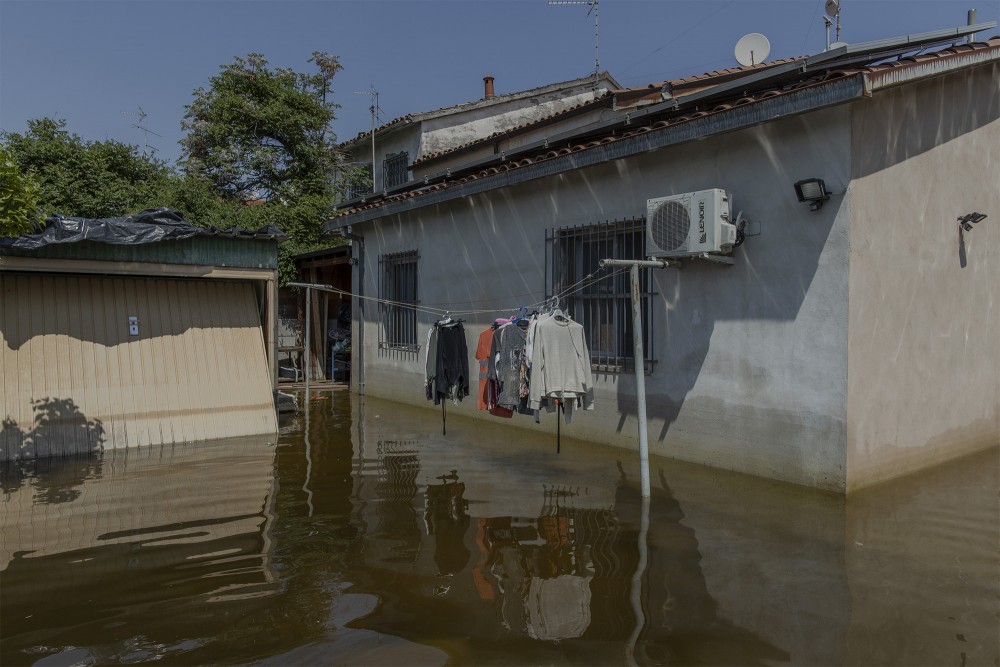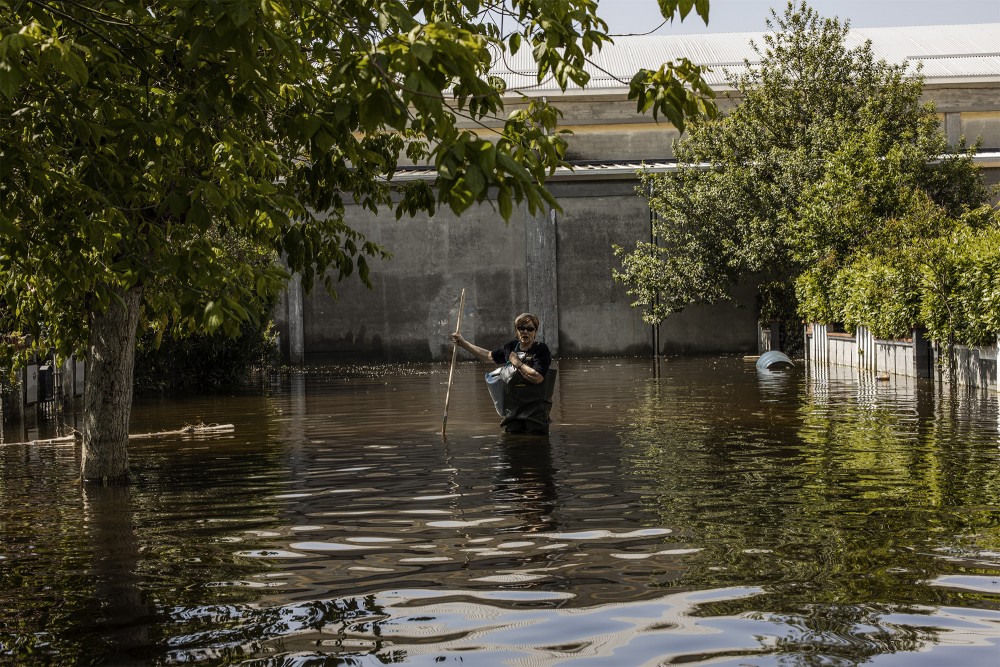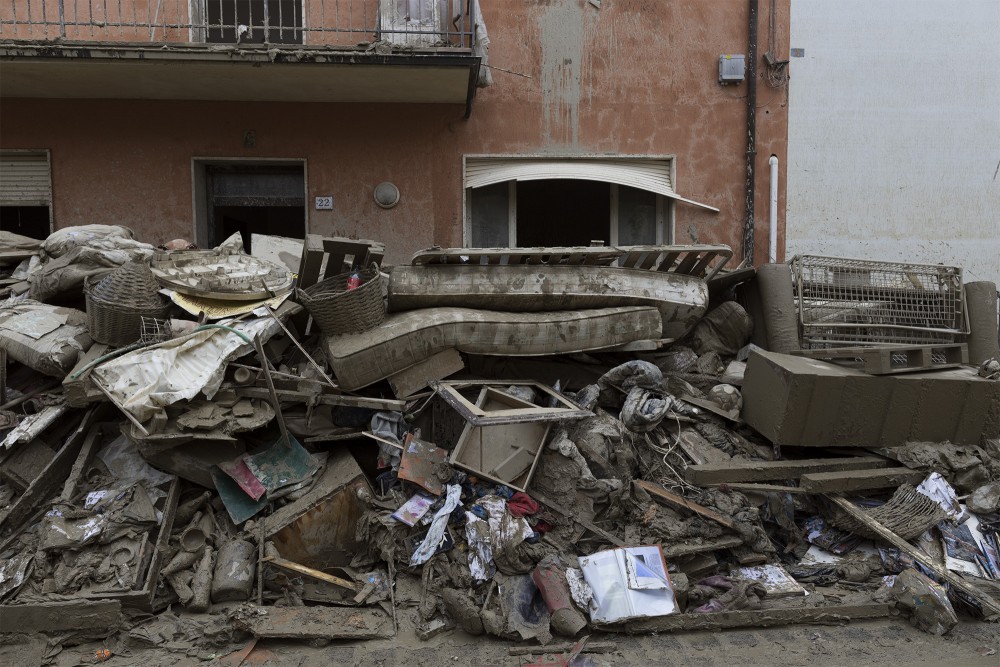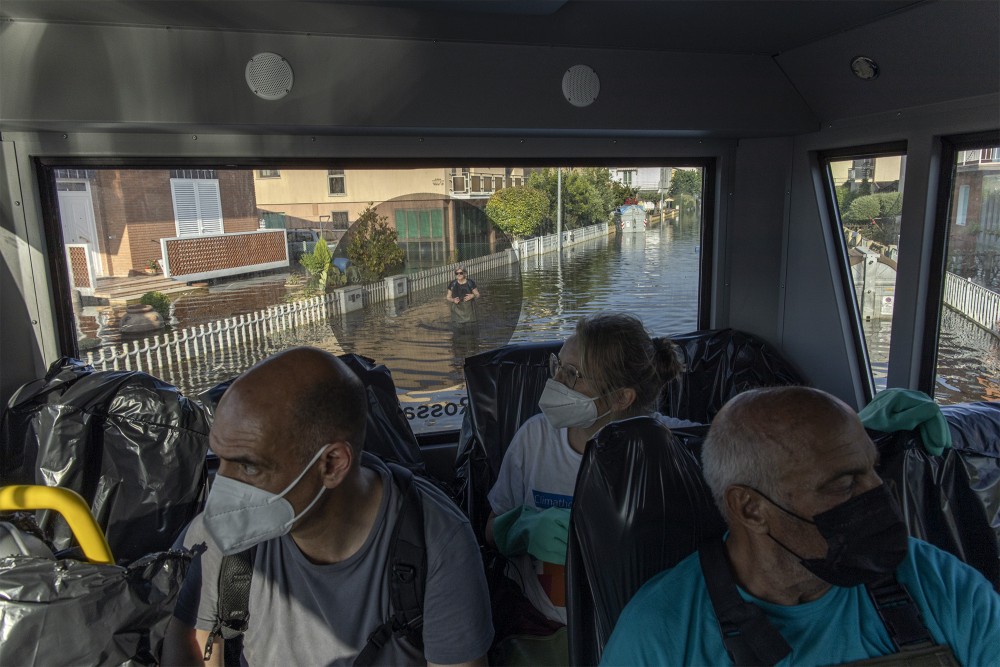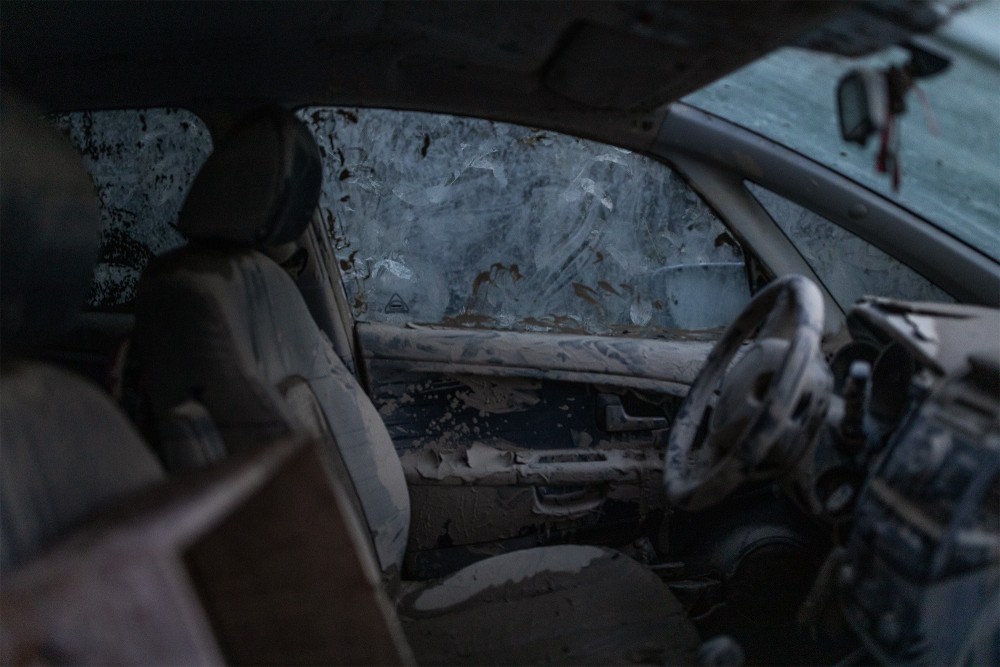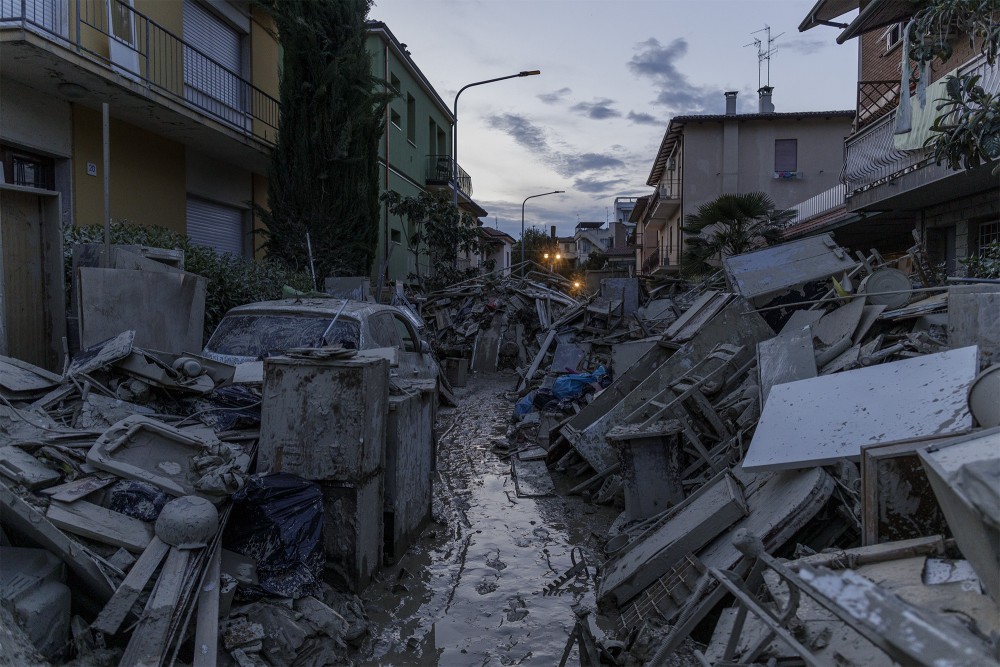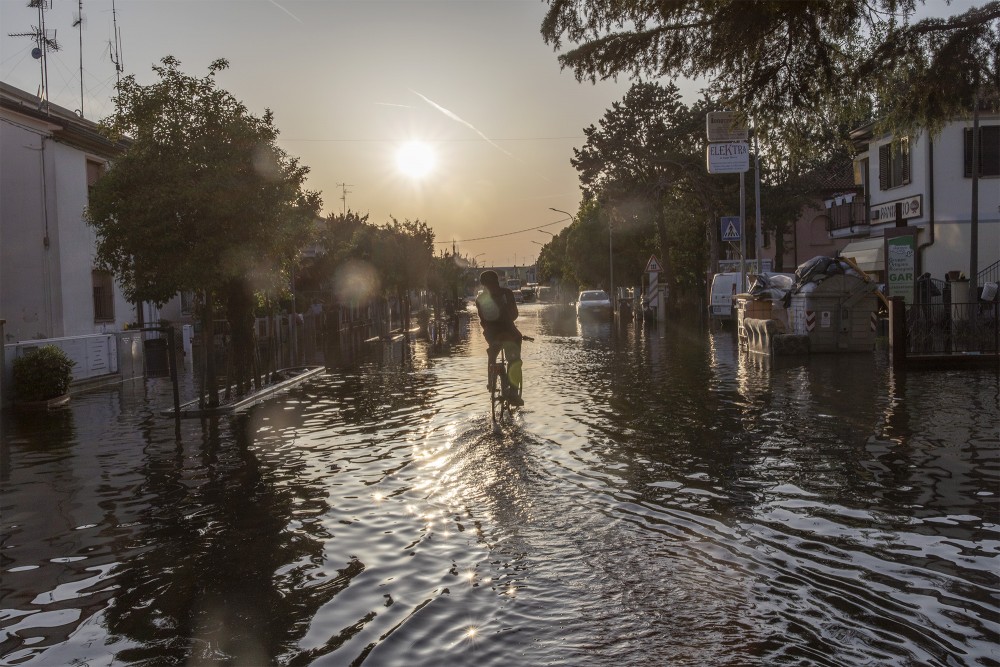Floods in Emilia-Romagna
Italy | May 2023
The devastating floods that engulfed the northern Italian region of Emilia-Romagna this month, claiming the lives of 15 individuals, displacing thousands, and bringing transportation and businesses to a standstill, are not isolated incidents, warn experts. They predict a future marked by a surge in similar, frequent, and increasingly intense storms.
It cannot be said that Conselice and Lavezzola, the epicenters hit by the most persistent consequences of the catastrophe, are still underwater. Vast areas remain simply swallowed inside an asphyxiating unknown element: between one and two meters of toxic mixture that seeps into homes and now threatens to explode in an infected bomb. Isolated in the marsh are over 3,000 hectares, hundreds of businesses, and the homes of 1,500 families. Around 500 people refuse to abandon their homes, which are flooded up to the first floor. For over a week, they endure being trapped without water, electricity, and gas, disconnected from the rest of the world.
“I only have this place,” says Claudia Boni, a 44-year-old elementary school teacher, leaning out from the balcony. “I can’t afford to lose it. If I evacuate to a gymnasium, I won’t see my home again.” The shipwrecked inhabitants of Conselice have been dubbed seagulls. They stand still at the windows or on the terraces from dawn till dusk; as soon as darkness falls, they go to sleep, dreaming in vain of waking up on a dry planet. Essential supplies, starting with medicine, are being distributed by three amphibious vehicles, nine rubber boats, and 70 civil protection personnel. They are joined by hundreds of volunteers who navigate the marshes, cross the railway, and reach the sports field area on monster tractors offered by farmers who cannot cultivate their uprooted, suffocated, soaked, and rotting fields this year.
The population senses that at least another week of high sludge awaits them, followed by months of emptying, disinfecting, and drying buildings. Firefighters’ assessments of the foundations predict extensive inhabitable conditions. “They want to cram us into collection centers in Argenta,” says Aurelio Gaudenzi, a 64-year-old artisan, “or into campsites. They’re looking for prefabricated structures like those for earthquake victims: it means Conselice is ruined for years.” More than the uncertain future, the unresolved present emergency is of greater concern. The swamp recedes by a few centimeters each day. It’s an exasperating slowness. The contested mayor, Paula Pula, repeats that it’s dangerous to expose bare legs and feet to this liquid, that it irritates the skin and mucous membranes, and that children should be kept away.
In a liquid of green, brown, black, and occasionally electric yellow, shoes, drowned chickens, jars of preserves, waste, uprooted plants, and everything that can take to the open water in a town of 10,000 inhabitants float, submerged for eight days. Patches of fuel, burst sewage, and ripped car tires from vehicles swept away by the flood emerge on the surface: mountains of manure, washed away from the stables, dissolve into the mud that covers what were once streets. From this liquid, struck by the sun, clouds of vapor rise, already filled with mosquitoes. A warm humidity carries the scent of fish, gasoline, chemical fertilizers, algae, and decomposed excrement.
The nightmare is a mass contagion, an unmanageable hygienic-sanitary emergency. From Friday, a mass vaccination campaign against tetanus is ready: prophylaxis and guidelines are being prepared, including in Arabic, to prevent salmonella and cholera. “The problem,” says Stefano Parigi, the head of the firefighters who are keeping the most flooded center in Romagna alive, “is that Conselice lies at the bottom of a barrel, 6 meters above sea level. The 400 million cubic meters of water from the floods of the Sillaro, Santerno, and Reno rivers have flowed into this basin. The drainage, besides being difficult, is now dangerous. The embankments are stressed, and if 100 pumps empty them all at once before the sun hardens them, they threaten to crumble like sandcastles. It’s an ordeal for the people, but patience is needed.”
Centimeter by centimeter, the sludge is receding. For those whose homes have been submerged for eight days, the prospect of being only halfway through the estimated time before seeing dry land again is unbearable. Vast expanses of orchards suffocate, and dozens of stables have been saved thanks to solidarity. “For all the other people in Romagna,” says Matteo Cricca, a 43-year-old worker, “the flood came and went in two days. It was a tragedy, but they’re already working to rebuild their lives. Not us: the waiting is destroying our minds, it’s a punishment even worse than the mud. The Unigra plant, which refines vegetable oils, is devastated: if it doesn’t reopen, 800 families will be left without income. We are threatened by tetanus, but if we survive, we risk having to emigrate forever.” Flooded fields and neighborhoods are deserted. Rare individuals, with fishing boots up to their chests, wander around with bags of salvaged clothes, brooms to push the sewage somewhere unknown, and wooden crates containing their children’s schoolbooks. Some people drag floating styrofoam cubes loaded with furniture and bags.
Gabriele Romagnoli for La Repubblica
click HERE to read the original article in Italian.
